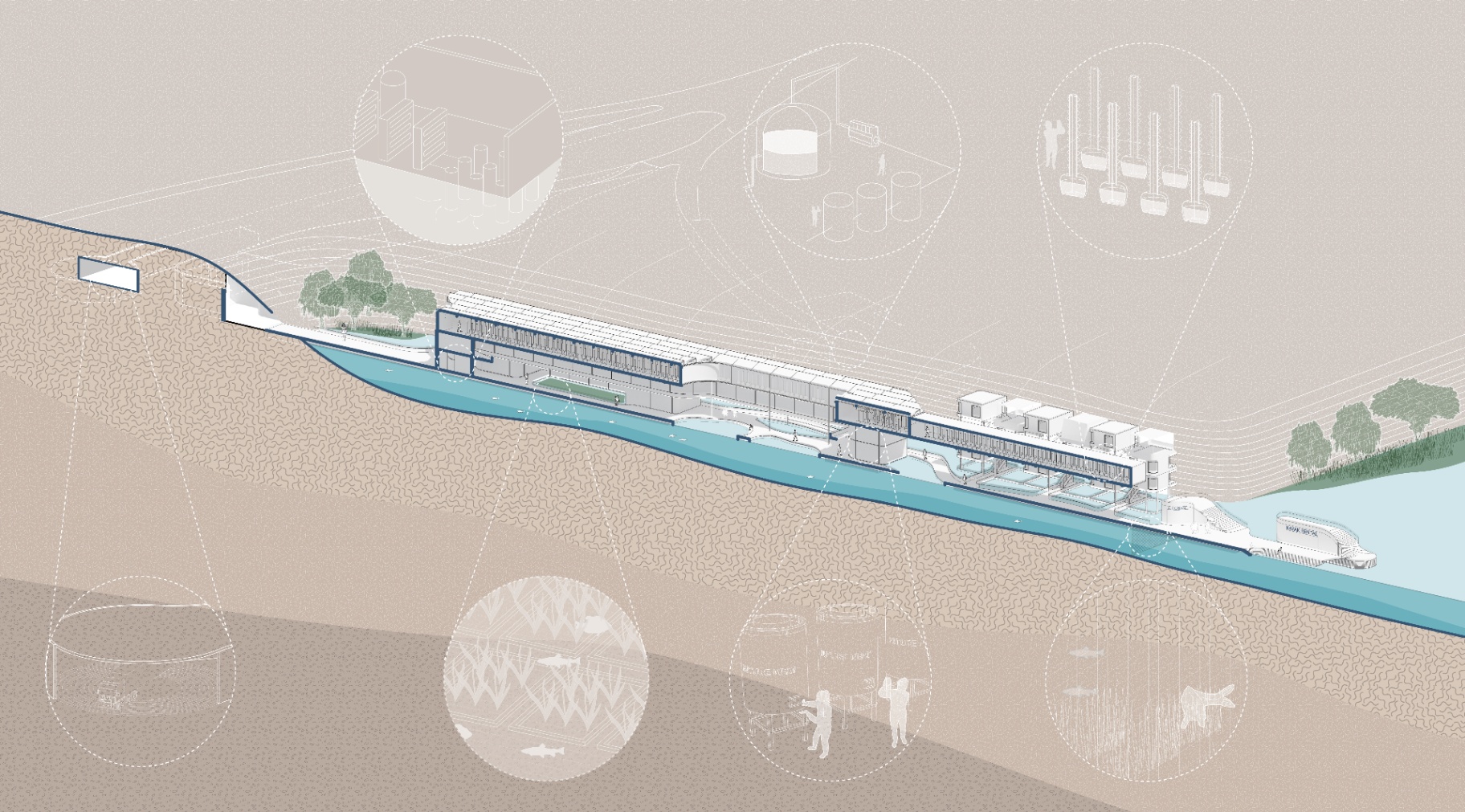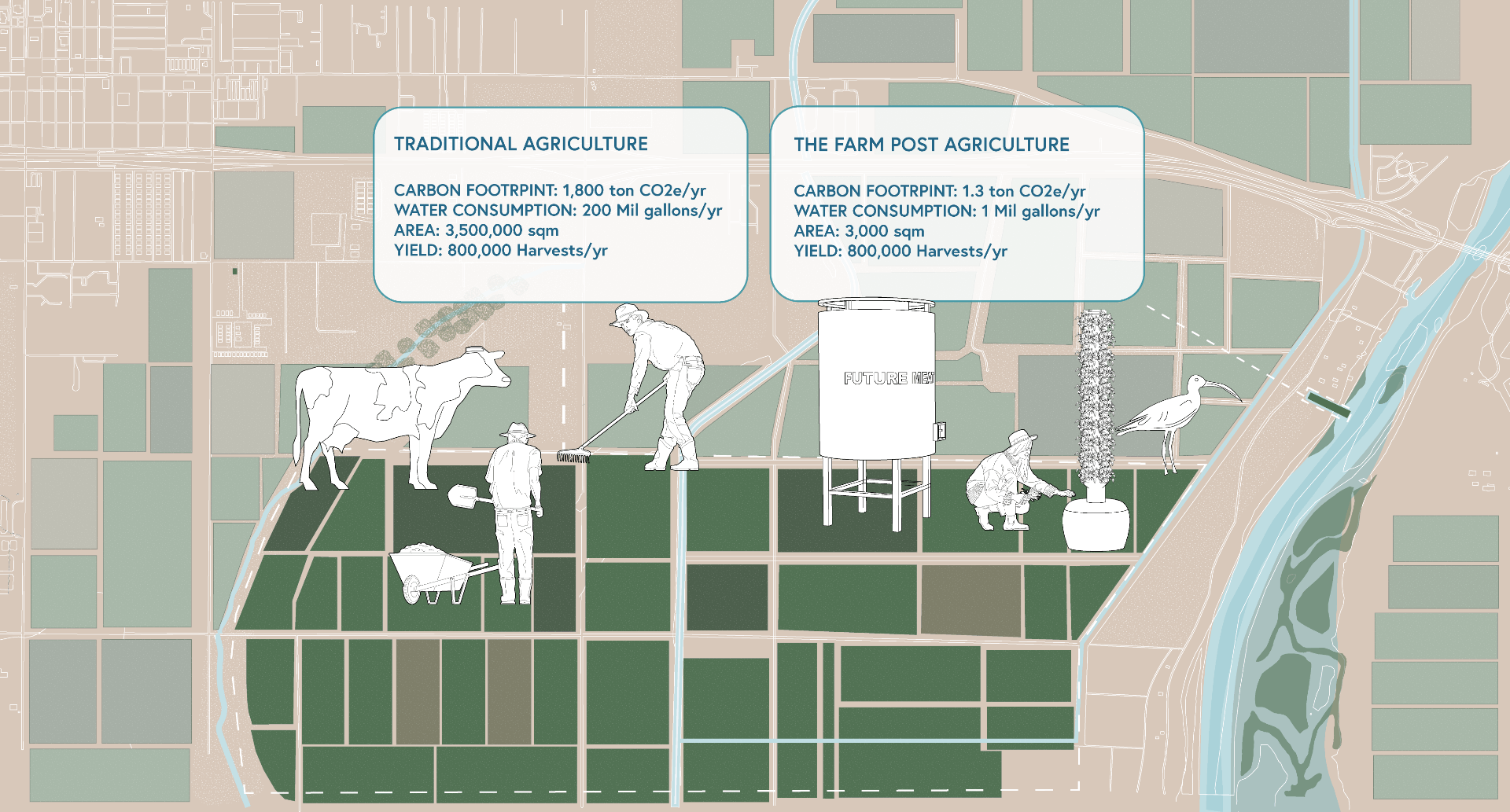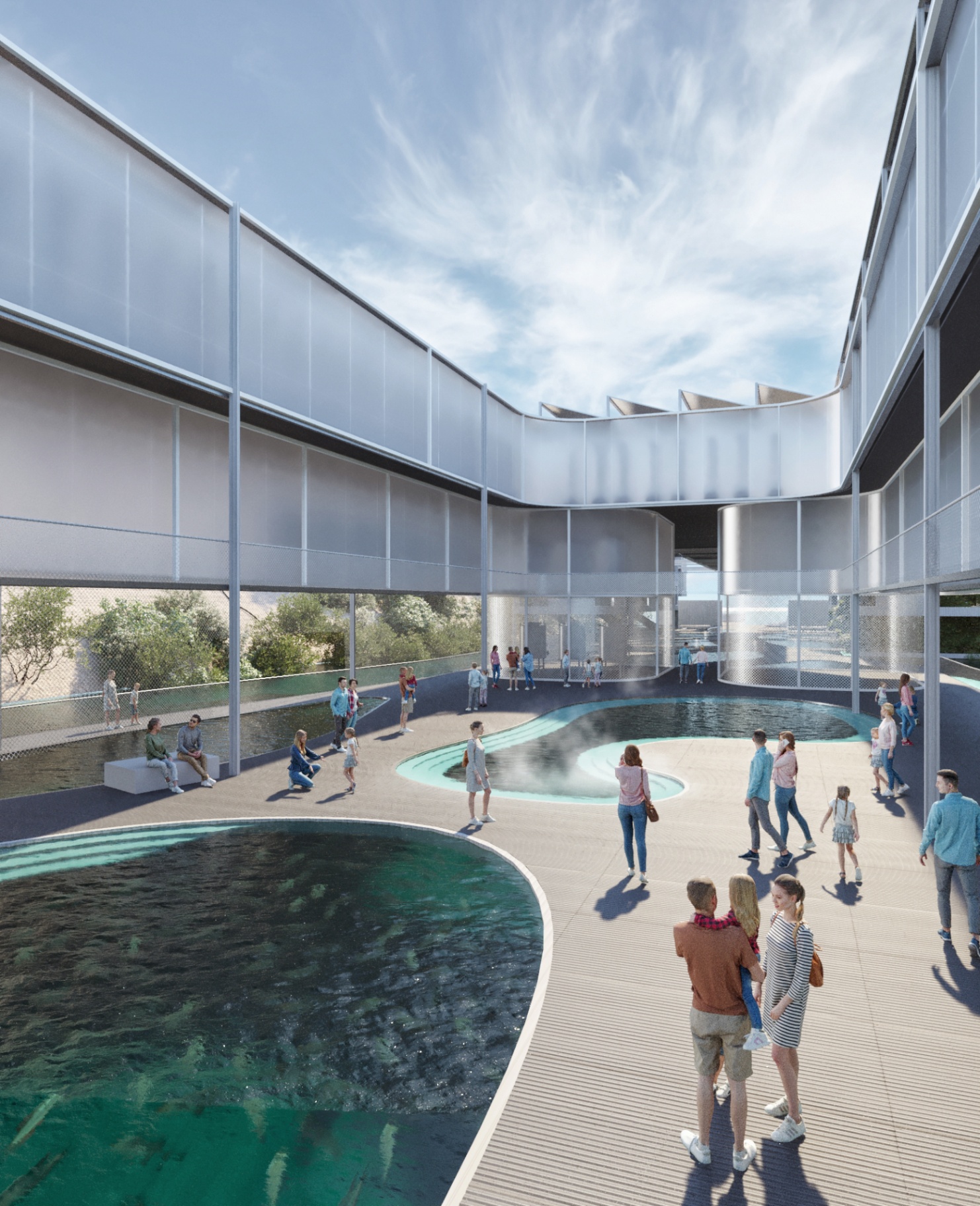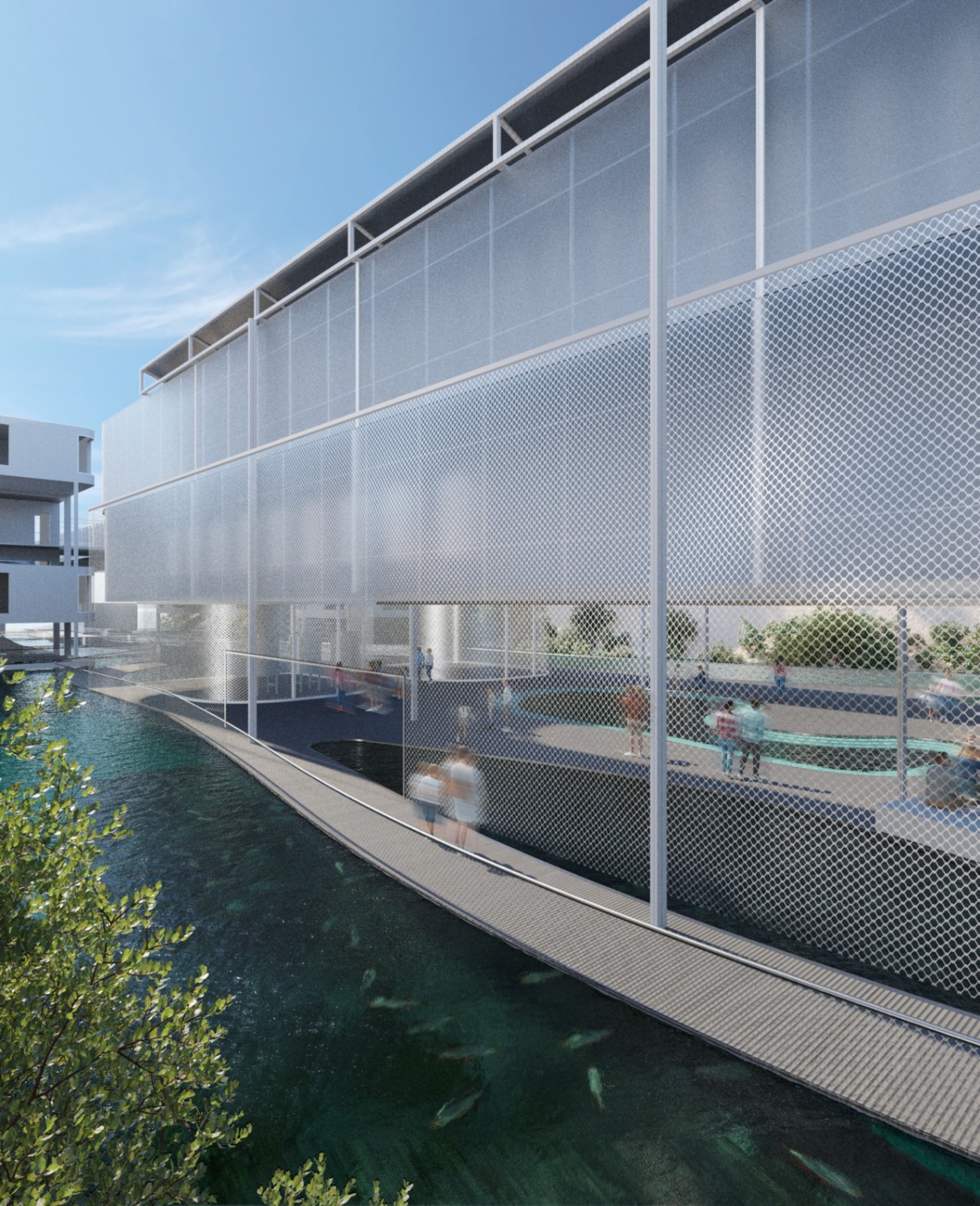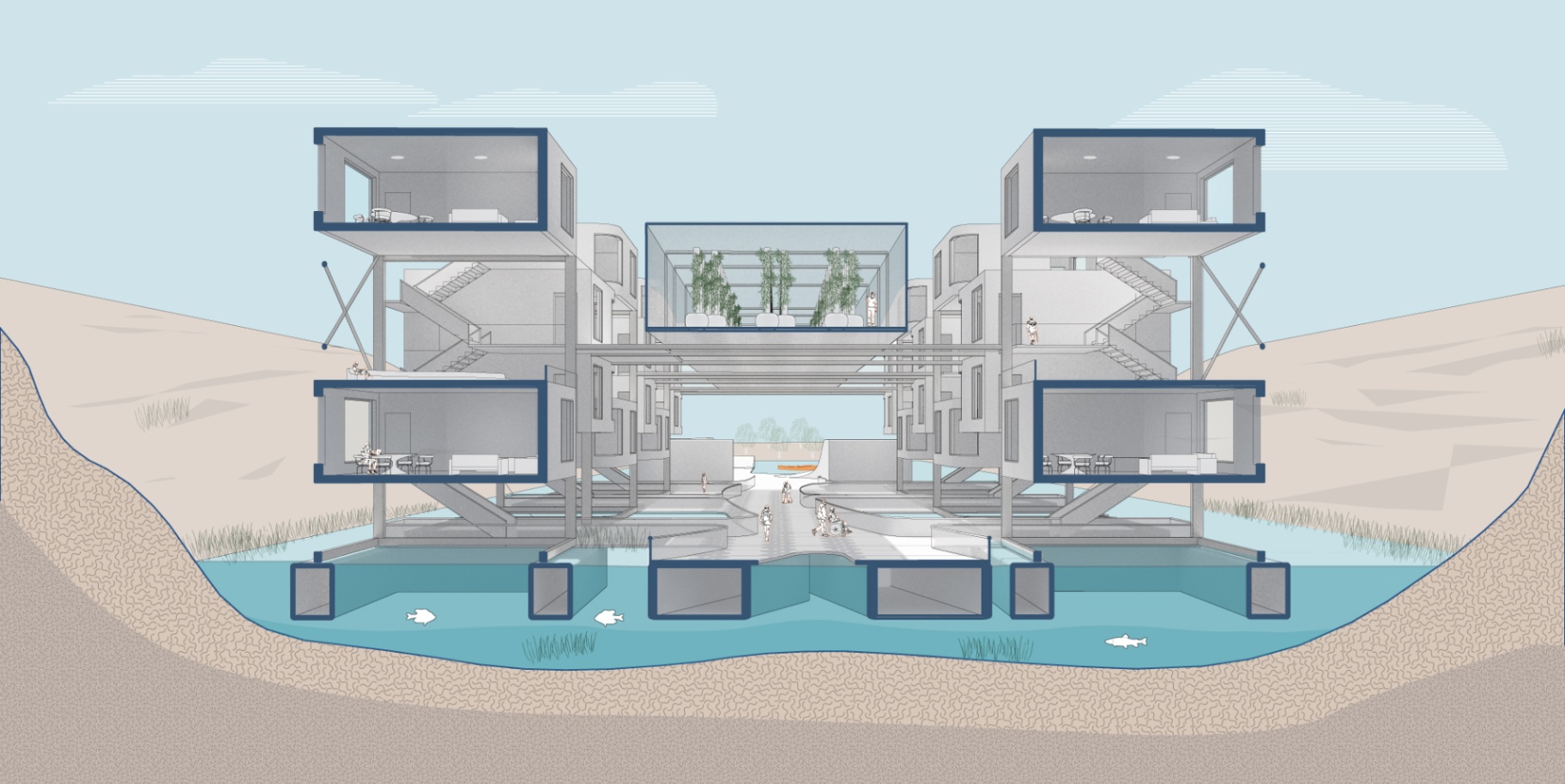Back
The Farm Post Agriculture
Year: 2022
Category: Industrial & Infrastructure
Skills: Rhino, V-Ray
The farm has the potential to play a huge role in reducing our global carbon footprint. What are we to learn as we hope to move into a post Anthropocene world? How can we move past agriculture and simultaneously dismantle our binary interpretation of nature? The horticultural farm in Blythe is set out to allow us to question what nature is, and bring industry, biophilia and wildlife closer together. By lifting the food production spaces above, a ground floor can serve as a shaded park that is kept at a comfortable thermal level due to its proximity to the Colorado River.
The US relies on the Palo Verde valley to provide most of its winter vegetables, however, inefficient and outdated farming practices, as well as growing water intensive crops such as alfalfa has only exacerbated the water crisis. Removing alfalfa from the equation by introducing a lab grown meat facility, as well as having new sustainable farming practices, the new facility which has an area of 3,000 sqm can produce as much yield as 3.5 million sqm. Furthermore, the crops that are being grown are plants for human consumption.
When comparing the two practices, the new facility proposed uses 99% less land, 98% less water, and 90% less energy.
The permeability of the ground floor offers a series of interconnected recreational spaces for families to gather and picnic with pools, play areas, fishing spots, kayaking to the revitalized wetlands, and allow them to engage in the industrial practices . The aquaponic farm which is located on the west side of the park, invites fish to enter the inlet, and eat from the nutrients of the aquaponic farm, this creates the opportunity for small fishing pools for recreational fishing.
The park on the ground floor with different edge conditions creates different experiences and activities, the the metal curtain which goes into the water, helps mediate the temperature. shaded and protected from the harsh desert sun, and floating on the temperate river, the building hosts several programs, aeroponic farms, a lab growing meat facility, an aquaponic farm, an outdoor food market, housing, a biogas facility that uses the waste to generate energy, a distribution center, and recreation facilities.
Working with the Colorado river rather than against it, the facility is using its thermal mass, and its steady temperature as a climate control mechanism in the harsh dry and arid climate. Water which has twice the thermal mass of common materials such as concrete, will mediate the changing temperature in the desert. The housing aspect works symbiotically with the aeroponic farming so that the units are offered peeks through the farm, which in turn creates intimate courtyards surrounded by vegetation. The project ultimately allows us to imagine how sustainable farming, biodiversity, recreation, and equitable space can coexist.
bisher tabbaa
More by bisher tabbaa
View profile